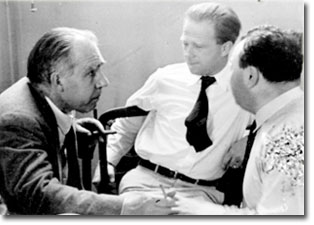The Copenhagen Interpretation
Bohr's assumptions leading to the prediction of hafnium were part of what has since been termed the ‘old quantum theory', in which quanta were introduced more or less ad hoc into classical physics.
 A full-fledged new theory was finally formulated with Werner Heisenberg's matrix mechanics in 1925 and Erwin Schrödinger's wave mechanics in 1926. While the former introduced a particle picture of nature breaking radically with classical physics, the latter seemed able to save classical physics by suggesting a wave picture. Yet the two theories were soon proven to be mathematically equivalent, and became known together as quantum mechanics.
A full-fledged new theory was finally formulated with Werner Heisenberg's matrix mechanics in 1925 and Erwin Schrödinger's wave mechanics in 1926. While the former introduced a particle picture of nature breaking radically with classical physics, the latter seemed able to save classical physics by suggesting a wave picture. Yet the two theories were soon proven to be mathematically equivalent, and became known together as quantum mechanics.
The effort at Bohr's institute to understand how this seeming contradiction could be understood physically exemplifies another unique feature of the institute in addition to the unity between theory and experiment, namely the open and informal discussion among peers.
By the second half of 1927 severe differences of opinion between in particular Bohr, Heisenberg and the Austrian physicist Wolfgang Pauli had converged to a consensus based on Bohr's concept of complementarity, which states that a physical phenomenon may manifest itself in two different ‘complementary' ways depending on the experiment set up to investigate it. Thus light, for example, could appear sometimes as a wave and sometimes as a particle. Although mutually exclusive, both pictures were necessary to obtain a full description of the phenomenon.
Bohr first formulated this radical viewpoint publicly at a conference in Como, Italy in late summer 1927 and then at the Solvay Conference some months later. What has later been termed the Copenhagen Interpretation constituted the basis for the famous discussions between Bohr and Albert Einstein at the 1927 and 1930 Solvay Conferences, and is still disputed today. Yet it is probably still the view held by most physicists.
Finn Aaserud, historian of science, director of the Niels Bohr Archive
